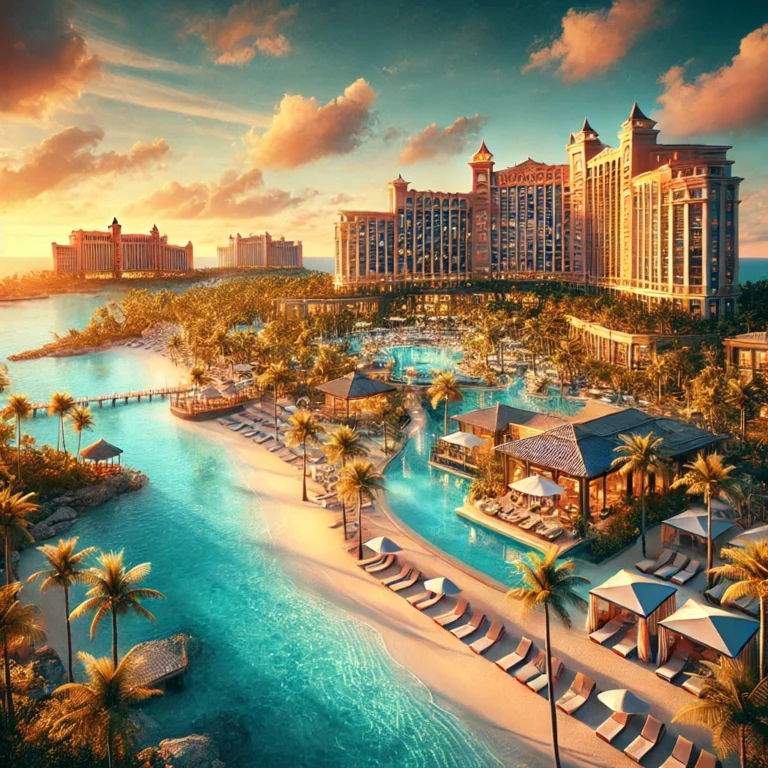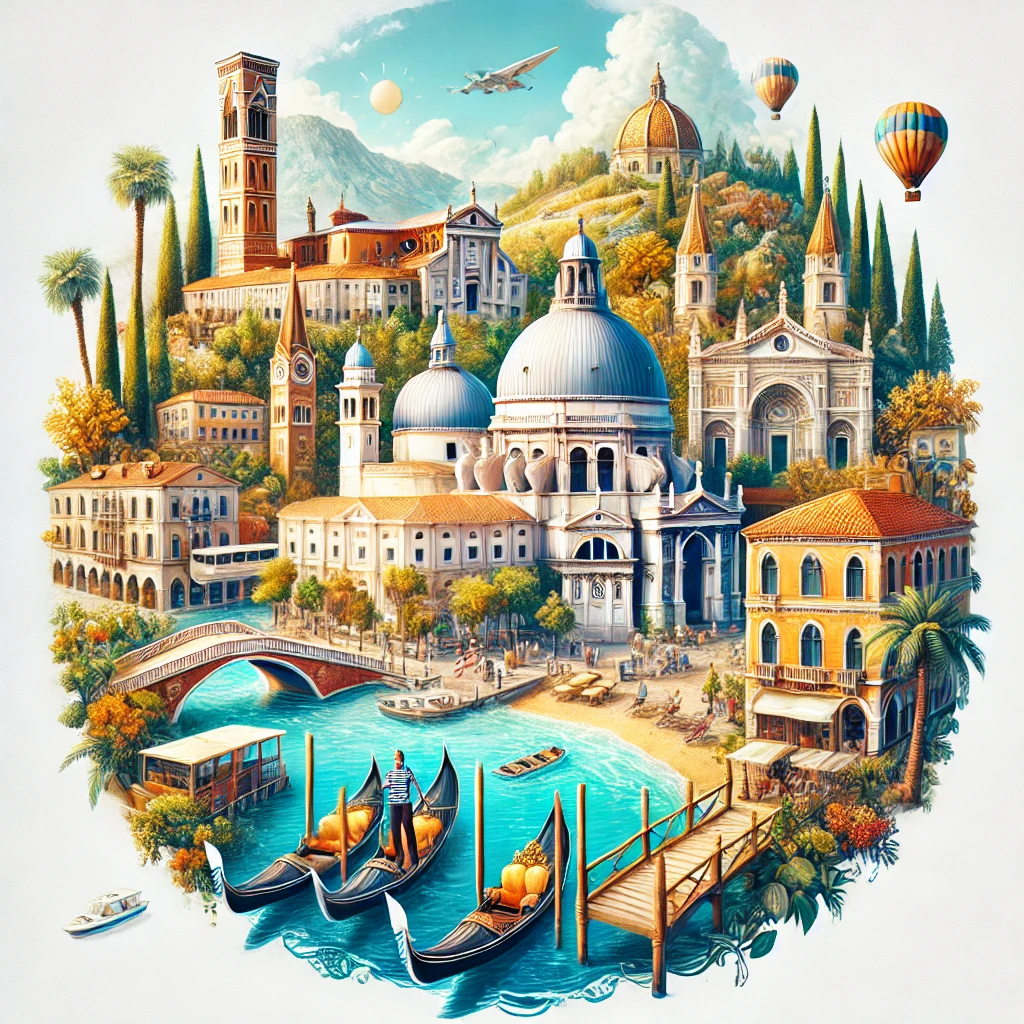
Discover the best places to visit in Italy, from iconic landmarks to hidden gems, for an unforgettable journey through art, culture, and breathtaking landscapes.
Italy is a dream destination for many, but beyond the famous landmarks and bustling cities lies a world of hidden gems waiting to be discovered.
This local’s guide offers a deeper dive into Italy’s must-see spots, from quiet towns rich in tradition to bustling markets and stunning coastlines.
Here’s your ultimate guide to experiencing Italy like a true insider, complete with suggestions for accommodations, essential packing tips, and a few shopping ideas to make your journey unforgettable.
Why Explore Italy’s Hidden Gems?
Italy’s beauty lies not only in its iconic cities but in the quiet charm of lesser-known towns, the flavors of local cuisine, and the vibrant stories of each region.
Traveling through Italy like a local means experiencing the country’s authenticity – from sipping espresso in hidden cafés to exploring artisan markets.
This guide will take you beyond the tourist spots to a journey that’s uniquely Italian.
Northern Italy: History, Lakes, and Art

1. Venice: Beyond the Canals
While Venice’s canals and gondolas are world-renowned, there’s much more to discover here.
Escape the crowds by exploring Burano and Murano, two picturesque islands known for their colorful houses and glassmaking tradition.
Burano’s vibrant streets are perfect for photography, while Murano offers fascinating glassblowing demonstrations.
- Local Tip: Time your visit to early morning or late evening to see the canals in peace.
- Accommodation: Consider staying at a boutique hotel in Cannaregio, a quieter district that still provides easy access to Venice’s highlights.
Shopping for the Unique
Bring home a piece of Murano glass – it’s a unique keepsake from Italy.
Shop from local artisans on the island, or for convenience.
2. Lake Como: The Secret Getaway of the North
Nestled between mountains, Lake Como is famous for its elegance and natural beauty.
While the lakefront town of Como is popular, consider taking a ferry to Bellagio or Varenna, where you’ll find charming villas, cobblestone streets, and breathtaking gardens.
- Local Tip: Varenna is an ideal base for those seeking a quieter atmosphere with stunning lake views.
- Accommodation: Check out waterfront hotels in Bellagio or Varenna for a serene lakeside stay.
Packing Essentials
For a day by the lake or hiking nearby trails, consider bringing a compact daypack and comfortable walking shoes.
Central Italy: Art, Culture, and Culinary Delights

3. Florence: Art and Artisan Markets
Florence is an art lover’s paradise, but it also offers a unique market culture worth exploring.
Don’t miss the Sant’Ambrogio Market for local foods and handmade goods.
The Oltrarno district is home to artisan workshops where you can watch locals craft jewelry, leather, and more.
- Local Tip: The quieter Bardini Gardens offer a beautiful, panoramic view of the city and are less crowded than the famous Boboli Gardens.
- Accommodation: Choose a stay in the Santo Spirito neighborhood for an authentic Florentine experience.
Shopping for Essentials
Florence is famous for its leather goods – think belts, wallets, and jackets.
4. Rome: Explore Trastevere’s Authentic Charm
Rome’s Trastevere neighborhood is a lively area that feels worlds apart from the bustling city center.
Here, cobbled streets and ivy-covered buildings set the stage for some of the best local trattorias and cafes.
Wander through Piazza di Santa Maria or visit Villa Farnesina to admire Renaissance frescoes.
- Local Tip: Trastevere is particularly magical at night, with its vibrant dining scene and lively nightlife.
- Accommodation: Look for hotels in Trastevere or nearby Testaccio for a more local experience.
Packing and Equipment
Rome involves a lot of walking, so bring a portable water bottle and comfortable sneakers.
Southern Italy: Coastal Beauty and Historic Wonders
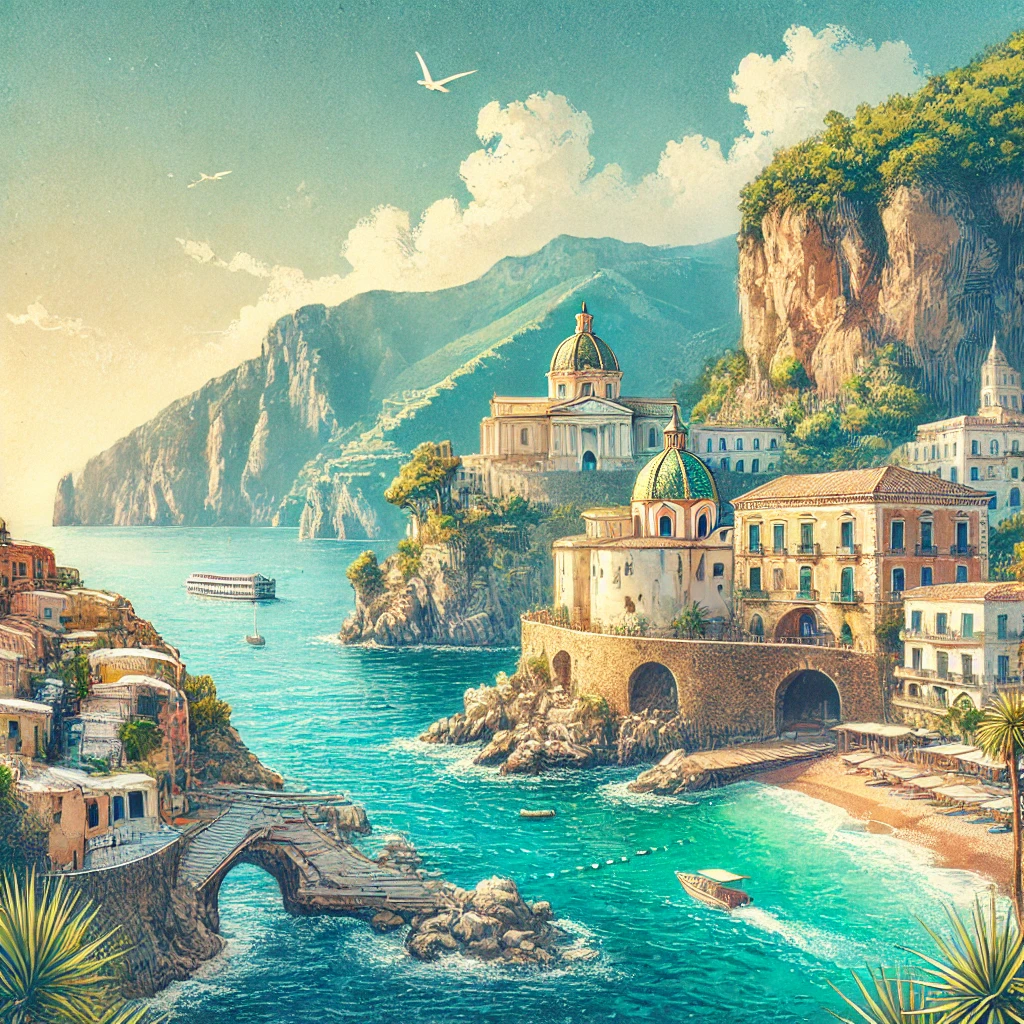
5. Amalfi Coast: Atrani’s Hidden Beaches
The Amalfi Coast is famous for its dramatic cliffs and turquoise waters, but smaller towns like Atrani offer a quieter escape from the bustling crowds of Amalfi and Positano.
Spend an afternoon exploring Atrani’s narrow alleys or take a swim at the secluded beaches only locals know about.
- Local Tip: For stunning views, hike the Path of the Gods trail from Agerola to Nocelle.
- Accommodation: Try staying in Atrani or Praiano for a peaceful stay on the coast.
Beach Essentials
For a relaxing day on the beach, pack a lightweight, foldable beach mat and waterproof phone case, for added convenience and protection.
6. Sicily: Palermo’s Street Food and Ancient Ruins
Sicily’s rich culture and flavorful cuisine make it a must-visit.
In Palermo, experience the vibrant street food scene at Ballarò Market, where you can taste local delicacies like arancini (stuffed rice balls) and cannoli.
For history lovers, a trip to the Valley of the Temples in Agrigento is a journey back in time.
- Local Tip: Visit the local wine shops to taste Sicilian wines, or go on a vineyard tour in the countryside.
- Accommodation: Book a stay in Palermo’s city center to experience Sicily’s energetic atmosphere.
Foodie Packing Essentials
Bring along a foldable food container and travel cutlery set, so you can sample street food and local specialties as you wander through Sicily’s markets.
7. Puglia: Discover the Whitewashed Villages and Olive Groves
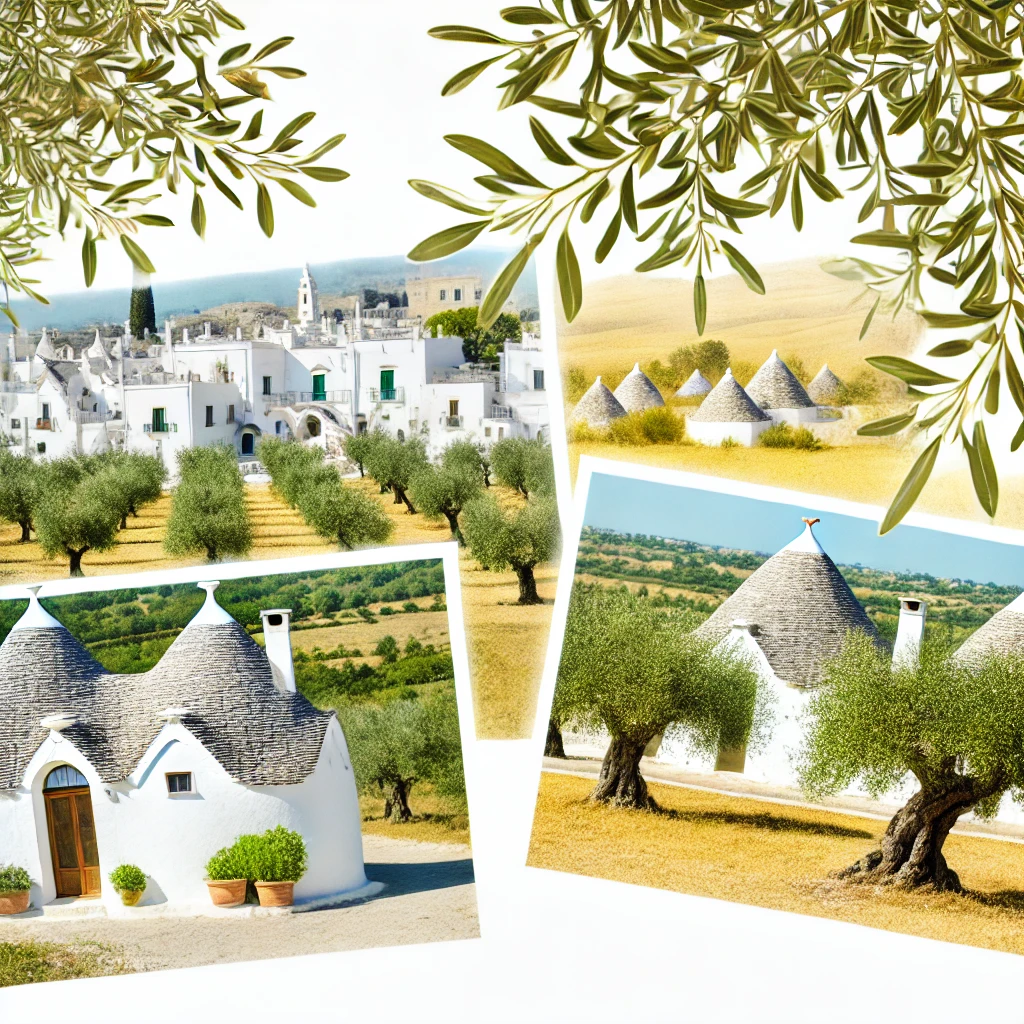
The southeastern region of Puglia is famous for its whitewashed villages like Alberobello, known for its unique trulli houses, and Ostuni, the “White City.”
Puglia also boasts miles of olive groves, beaches with turquoise waters, and delicious, farm-to-table cuisine.
It’s a fantastic destination for those looking to explore a more rural and authentic side of Italy.
- Local Tip: Try the olive oil tastings at local farms – Puglia is Italy’s olive oil capital!
- Accommodation: Stay in a traditional trulli house or a rural farmhouse for an authentic experience.
Packing for Puglia
For exploring Puglia’s countryside, pack a light scarf or hat to stay cool under the Mediterranean sun and comfortable walking shoes for uneven paths.
8. Cinque Terre: A Hiker’s Paradise Along the Italian Riviera
The Cinque Terre is a collection of five cliffside villages overlooking the Ligurian Sea.
It’s popular for its breathtaking hiking trails, pastel-colored buildings, and stunning views.
Each town offers a unique charm: Riomaggiore for its beautiful harbor, Vernazza for its picturesque beach, and Monterosso al Mare for its sandy shores.
- Local Tip: Purchase a Cinque Terre Card, which gives you access to hiking trails and unlimited train rides between the towns.
- Accommodation: Book a stay in one of the five villages or nearby La Spezia for convenient access.
Essential Hiking Gear
Bring lightweight, quick-dry clothing and a sturdy pair of hiking boots for the Cinque Terre trails.
9. Sardinia: Beaches and Ancient Mysteries
Sardinia, an island off Italy’s western coast, is famous for its pristine beaches and unique archaeological sites.
Head to Costa Smeralda for crystal-clear waters, Cagliari for its lively markets, and the Nuraghe Su Nuraxi site to explore mysterious ancient ruins dating back thousands of years.
- Local Tip: Visit Sardinia in the shoulder season (May or September) for fewer crowds and mild weather.
- Accommodation: Choose from beach resorts on the Costa Smeralda or charming B&Bs in Cagliari.
Beach Essentials
For a comfortable beach day, pack a reusable beach towel, sand-proof blanket, and snorkel set.
10. The Italian Alps: Outdoor Adventures and Scenic Villages
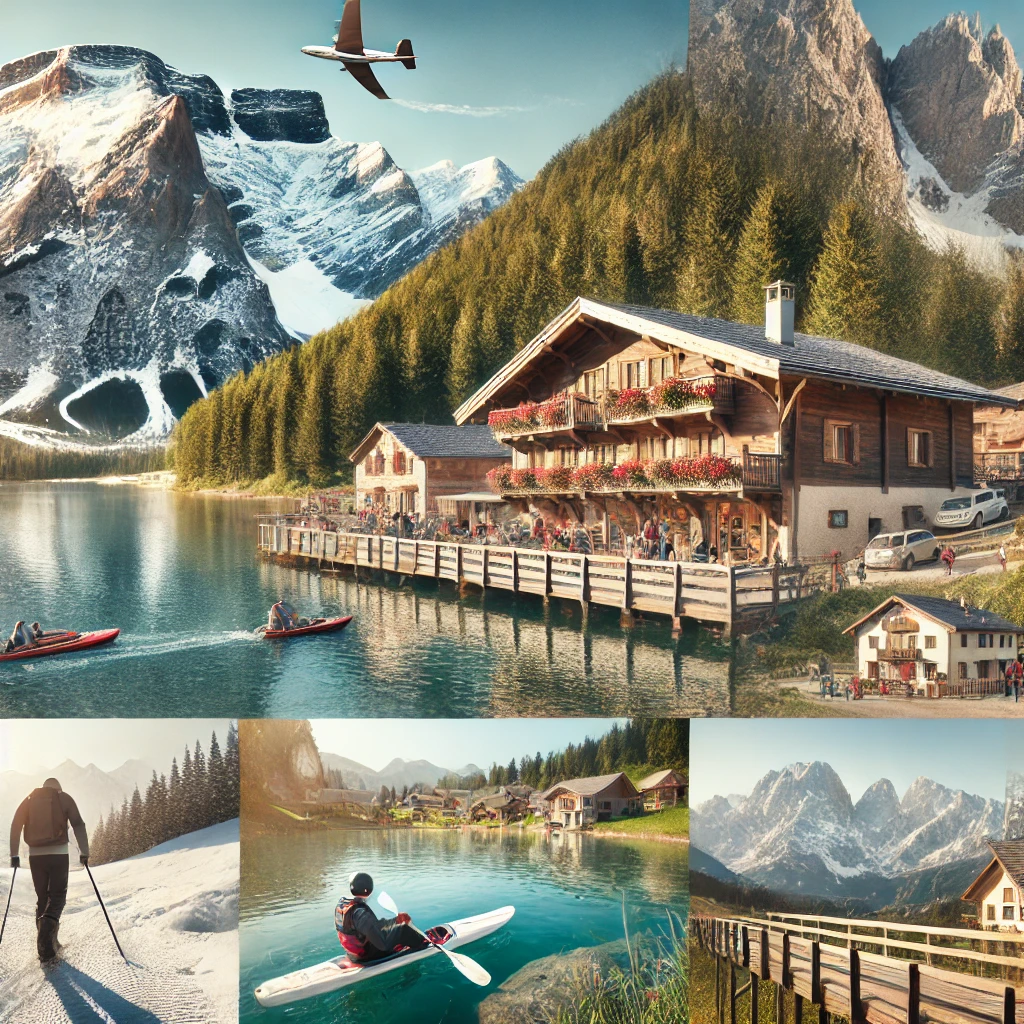
Italy’s Alps offer a range of activities for adventure seekers and nature lovers alike.
Visit Bolzano for its blend of Italian and Austrian culture, Cortina d’Ampezzo for world-class skiing, or take on the breathtaking hiking trails of the Dolomites.
- Local Tip: Winter sports enthusiasts should book in advance, as accommodations fill up quickly during ski season.
- Accommodation: Opt for a cozy mountain lodge or luxury ski resort, depending on your preferences.
Outdoor Gear for the Alps
If you plan to explore the Alps, bring a warm jacket, thermal layers, and compact binoculars for wildlife spotting.
11. Italian Islands: Discover Capri, Ischia, and the Aeolian Islands
Italy’s islands, each unique, offer something for every traveler.
Capri is known for its upscale resorts and the famous Blue Grotto; Ischia is celebrated for its natural thermal spas; and the volcanic Aeolian Islands are ideal for a secluded escape with striking landscapes and crystal-clear waters.
- Local Tip: For the best island experience, rent a boat to explore hidden coves and lesser-known beaches.
- Accommodation: From luxury hotels in Capri to family-run inns in Ischia, there’s something for everyone.
Packing Essentials for the Islands
For island hopping, consider packing a dry bag, sun hat, and water-resistant phone case to keep your belongings safe and dry.
Accomodation Options for Different Spots In Italy
Here’s a curated list of accommodation options across various Italian destinations, detailing their location, rating, highlights, category (luxury, mid-range, or budget), and direct booking links on Expedia:
| Destination | Accommodation Name | Location | Rating (out of 10) | Highlights | Category | Book on Expedia Link |
|---|---|---|---|---|---|---|
| Venice | Hotel Antico Doge | Cannaregio 5643, 30131 Venezia Veneto | 7.0 (9 reviews) | 13th-century palace, elegant rooms, historic charm | Mid-range | Book on Expedia |
| Carnival Palace Hotel | Fondamenta di Cannaregio 929, 30121 Venezia Veneto | 8.5 (61 reviews) | Modern boutique, private garden, near Jewish Ghetto and Grand Canal | Mid-range | Book on Expedia | |
| Hotel Cà D’oro | Corte Barbaro, Cannaregio 4604, 30121 Venezia Veneto | 8.0 (50 reviews) | Classic Venetian decor, rooftop terrace, close to Rialto Bridge | Mid-range | Book on Expedia | |
| Lake Como | Grand Hotel Tremezzo | Via Regina 8, 22019 Tremezzo Lombardia | 9.0 (137 reviews) | Luxurious 5-star, private beach, three pools, panoramic lake views | Luxury | Book on Expedia |
| Hotel Belvedere | Via Valassina 31, 22021 Bellagio Lombardia | 8.9 (44 reviews) | Family-run, spa, outdoor pool, near Bellagio’s historic center | Mid-range | Book on Expedia | |
| Hilton Lake Como | Via Borgo Vico 241, 22100 Como Lombardia | 8.8 (39 reviews) | Contemporary, rooftop infinity pool, spa, close to Villa Olmo | Luxury | Book on Expedia | |
| Florence | The Social Hub Florence | Viale Spartaco Lavagnini 70-72, 50129 Firenze Toscana | 8.8 (35 reviews) | Modern hotel, workspaces, free laundry, vibrant social atmosphere | Mid-range | Book on Expedia |
| Hotel Lungarno | Borgo San Jacopo 14, 50125 Firenze Toscana | 8.3 (40 reviews) | Luxury hotel, Arno River views, renowned art collection | Luxury | Book on Expedia | |
| Hotel Pendini | Via Strozzi 2, 50123 Firenze Toscana | 8.7 (34 reviews) | Historic hotel, classic rooms, overlooks Piazza della Repubblica | Mid-range | Book on Expedia | |
| Rome | Hotel Artemide | Via Nazionale 22, 00184 Roma RM | 9.0 (200 reviews) | Rooftop terrace, spa, central location near major attractions | Luxury | Book on Expedia |
| Hotel Quirinale | Via Nazionale 7, 00184 Roma RM | 8.5 (150 reviews) | Historic charm, private garden, close to Opera House | Mid-range | Book on Expedia | |
| Hotel Santa Maria | Vicolo del Piede 2, 00153 Roma RM | 9.2 (100 reviews) | Boutique hotel, tranquil courtyard, located in Trastevere | Mid-range | Book on Expedia | |
| Amalfi Coast | Hotel Santa Caterina | S.S. Amalfitana, 9, 84011 Amalfi SA | 9.4 (80 reviews) | Cliffside location, private beach club, renowned restaurant | Luxury | Book on Expedia |
| Hotel Margherita | Via Umberto I, 70, 84010 Praiano SA | 9.0 (60 reviews) | Panoramic terrace, family-run, shuttle service to beach | Mid-range | Book on Expedia | |
| Hotel La Pergola | Via Giovanni Augustariccio, 10, 84011 Amalfi SA | 8.5 (50 reviews) | Sea-view rooms, lemon grove, close to Amalfi town center | Budget | Book on Expedia | |
| Sicily | Belmond Grand Hotel Timeo | Via Teatro Greco, 59, 98039 Taormina ME | 9.5 (70 reviews) | Overlooks Mount Etna, historic charm, beautiful gardens | Luxury | Book on Expedia |
| Hotel Villa Ducale | Via Leonardo da Vinci, 60, 98039 Taormina ME | 9.2 (60 reviews) | Boutique hotel, | Luxury | Book on Expedia |
Explore Italy Like a Local
With this guide to Italy’s must-see spots, you’ll be prepared to uncover the true essence of the country – from the coastal beauty of Cinque Terre to the ancient mysteries of Sardinia.
Whether you’re a foodie, a history enthusiast, or an adventure seeker, Italy offers an unforgettable experience at every turn.
Ready to book your dream trip?
Buon viaggio!
When to Visit Italy: A Seasonal Guide
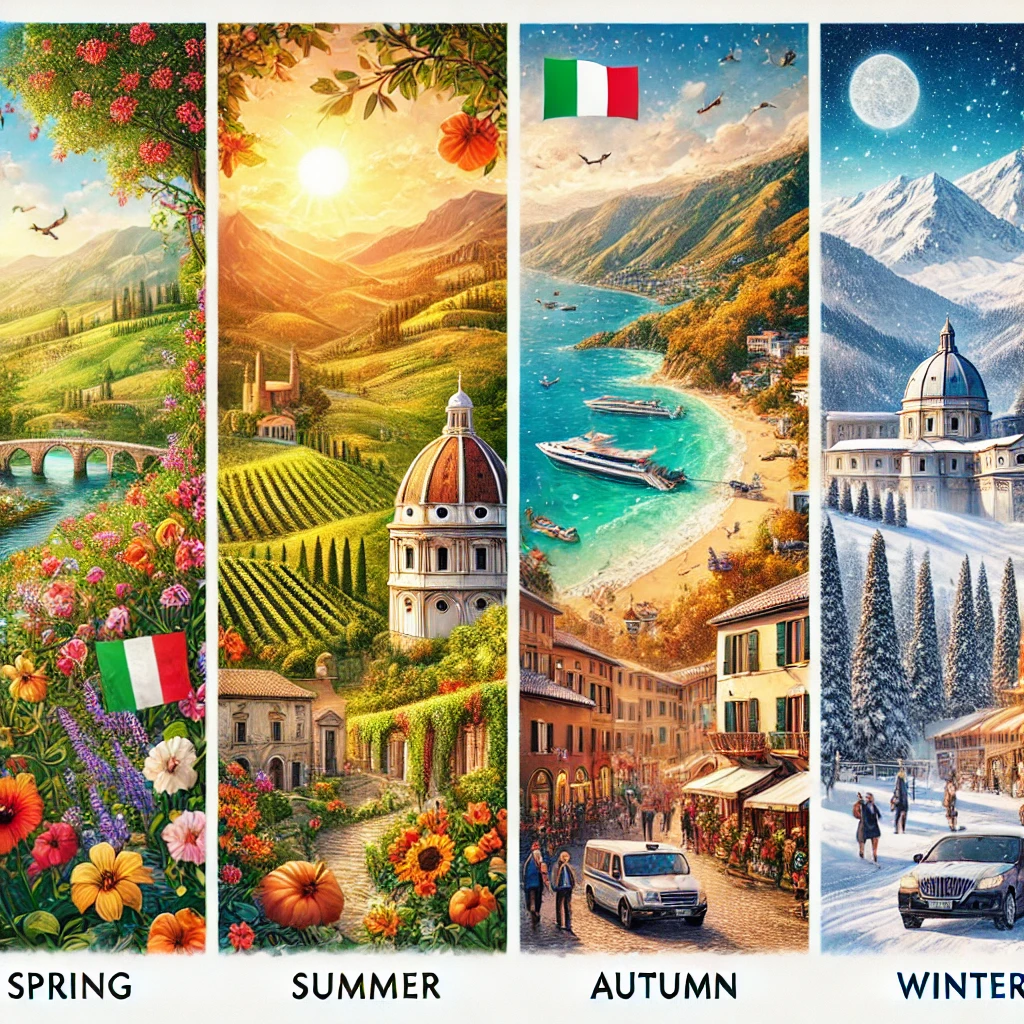
Italy is beautiful year-round, but each season offers a unique experience.
Here’s a quick overview to help you choose the best time for your visit:
- Spring (April to June): Ideal for mild weather, blooming landscapes, and fewer crowds. This is perfect for sightseeing, especially in places like Rome, Florence, and Venice.
- Summer (July to August): Great for beach destinations like Sardinia and the Amalfi Coast, though it’s also peak tourist season. Expect higher prices and larger crowds, especially in tourist hotspots.
- Fall (September to October): Mild temperatures return, and the autumn harvest season brings wine festivals and food fairs across Italy. A wonderful time to visit both cities and countryside.
- Winter (November to March): Perfect for skiing in the Alps and Dolomites or enjoying holiday markets in cities like Florence and Rome. Southern Italy stays mild, offering a quieter off-season escape.
Knowing the best time to visit can help you plan for fewer crowds, more favorable weather, and special seasonal events.
Italian Etiquette and Cultural Tips
Understanding Italian customs can enrich your travel experience and help you connect with locals.
Here are some key cultural tips:
- Greetings: Italians typically greet with a kiss on each cheek, though a handshake is common with strangers. Using simple Italian phrases like “Ciao” (Hello) or “Grazie” (Thank you) is appreciated.
- Dining Etiquette: Dinner often starts late, around 8 PM or later. It’s considered polite to finish all the food on your plate, as leaving food can be seen as rude.
- Tipping: Tipping is not obligatory in Italy, as a service charge is often included, but rounding up the bill is appreciated for excellent service.
- Dress Code: Italians tend to dress smartly, especially in cities. Wearing modest clothing when visiting churches and religious sites is expected, and some places may even have dress codes.
Familiarizing yourself with these cultural nuances can make your interactions smoother and enhance your overall experience in Italy.
Using Transportation in Italy: A Guide to Getting Around
Italy has a robust public transportation system, making it easy to travel between cities and regions. Here’s a breakdown of transportation options:
- Trains: Italy’s high-speed trains, such as the Frecciarossa and Italo, connect major cities like Rome, Milan, and Florence efficiently. Book tickets in advance for better rates.
- Buses: Local buses are convenient for smaller towns and rural areas. The FlixBus network also connects various cities at budget-friendly prices.
- Renting a Car: If you’re exploring remote areas or the countryside, renting a car offers flexibility. Note that driving in city centers can be challenging due to limited traffic zones.
- Vaporettos and Ferries: In Venice, the Vaporetto (water bus) is the primary mode of transport. Ferries are popular in lake and coastal areas, including Lake Como and the Amalfi Coast.
Having a clear idea of how to get around can save time and make travel between destinations smoother.
Must-Try Italian Foods and Where to Find Them
Italian cuisine varies significantly by region, so knowing what to try and where to find it can enhance your culinary experience:
- Pasta and Pizza: Each region has its specialty, from Rome’s cacio e pepe to Naples’ iconic Margherita pizza.
- Seafood: Coastal regions like Sicily and Liguria are famous for their fresh seafood dishes, such as spaghetti alle vongole (clam pasta).
- Risotto: Northern Italy, especially Milan and Veneto, is known for creamy risotto, including the famous risotto alla Milanese.
- Gelato: You can find gelato everywhere, but try it from artisanal shops in Florence or Bologna for an authentic taste.
To truly immerse in Italy’s culinary culture, consider booking a food tour or cooking class to learn from locals.
Embark on Your Italian Journey
Exploring Italy through the eyes of a local brings a deeper appreciation of the country’s culture, history, and hidden treasures.
Whether you’re drawn to the coastal beauty of the Amalfi Coast, the artistic flair of Florence, or the quiet charm of Lake Como, each region has its unique stories and experiences to offer.
Ready to book your Italian adventure?
Dive into these local gems and create memories that go beyond the typical tourist experience.
Happy travels – and enjoy Italy like a true local!
FAQ: Best Places to Visit in Italy
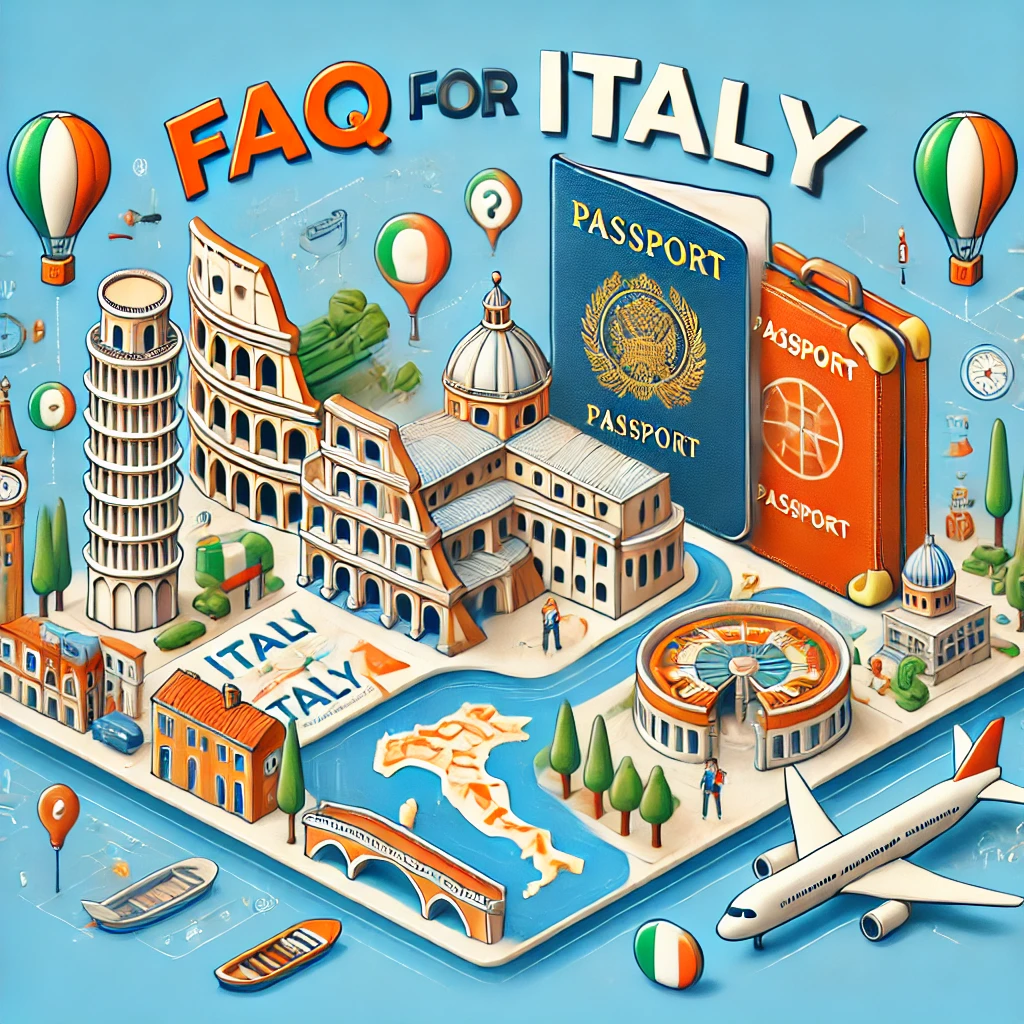
To help you prepare for your Italian adventure, here are answers to some frequently asked questions about visiting Italy:
Q: Do I need to know Italian to travel around Italy?
A: While knowing basic Italian phrases can enhance your experience and make it easier to communicate with locals, you don’t need to be fluent. In major cities and tourist areas, many Italians speak at least basic English. Learning a few Italian phrases like “Buongiorno” (Good morning), “Per favore” (Please), and “Dov’è il bagno?” (Where is the bathroom?) can be helpful and is often appreciated by locals.
Q: What’s the best way to pay in Italy? Should I use cash or credit cards?
A: Credit and debit cards are widely accepted in Italy, especially in cities and larger establishments. However, it’s a good idea to carry some cash (Euros) for smaller purchases, local markets, and in more rural areas where cards may not be accepted. ATMs (called “bancomat” in Italian) are easy to find, but be mindful of foreign transaction fees. Consider using a credit card with no foreign transaction fees, and notify your bank of your travel plans to avoid issues.
Q: Is it safe to travel to Italy as a solo traveler?
A: Yes, Italy is generally safe for solo travelers, and many people travel alone to experience the country’s culture, history, and beauty. As with any destination, take common-sense precautions: keep an eye on your belongings, especially in crowded areas and popular tourist spots, and avoid unlit or unfamiliar areas at night. Solo travelers often find Italy very welcoming, and there are plenty of group tours and day trips that can add to the experience.
Q: Do I need an international driver’s permit to rent a car in Italy?
A: Yes, an international driver’s permit (IDP) is required for tourists driving in Italy, in addition to your valid driver’s license from home. It’s especially important if you plan to rent a car, as rental companies may ask for it. You can easily obtain an IDP before your trip from agencies in your home country. Note that driving in Italy can be challenging due to traffic restrictions in city centers, so it’s often more convenient to use public transportation for city travel.
Q: How much should I budget for a trip to Italy?
A: The cost of a trip to Italy varies greatly depending on your travel style, destinations, and duration. A daily budget might look like this:
- Budget travelers: $60–$100 per day, staying in hostels, eating at local spots, and using public transportation.
- Mid-range travelers: $100–$200 per day, including boutique hotels, a mix of local and higher-end dining, and occasional tours.
- Luxury travelers: $200+ per day, with stays in upscale hotels, fine dining, and private tours or experiences.
Italy offers options for all budgets, so with a bit of planning, you can adjust your itinerary to fit your financial goals.
Q: What’s the tipping culture in Italy?
A: Tipping is not obligatory in Italy as it is in some other countries. However, leaving a small tip is appreciated for good service. Many restaurants include a “coperto” or cover charge, usually around €1-€3 per person, so additional tips aren’t required but are always welcome. For exceptional service, rounding up the bill or leaving 5–10% is a kind gesture.
Q: Can I drink tap water in Italy?
A: Yes, tap water in Italy is generally safe to drink, and you’ll find public fountains, especially in cities like Rome, where you can refill your water bottle. However, in some rural areas or older towns, locals might prefer bottled water. If you’re unsure, simply ask or look for signs that indicate drinking water is available.
Q: Do I need to book tickets in advance for popular attractions?
A: It’s highly recommended to book tickets in advance for major attractions, especially during peak tourist seasons. This includes places like the Colosseum, Vatican Museums, Uffizi Gallery, and Leaning Tower of Pisa. Booking online not only saves you time in line but can also secure your spot, as some sites have limited daily access.
Q: Are Italian power outlets the same as in the U.S. or UK?
A: No, Italy uses a Type L power socket with a standard voltage of 230V and a frequency of 50Hz. U.S. and UK visitors will need a power adapter to plug in devices, and some appliances may require a voltage converter. It’s advisable to bring a universal adapter with multiple plug options.
Related Articles:
Top 10 Must-Visit Cities in Italy for Your Next Vacation
10 Stunning Amalfi Coast Hotels with Unbeatable Views
Amazon Associate I earn from qualifying purchases.

